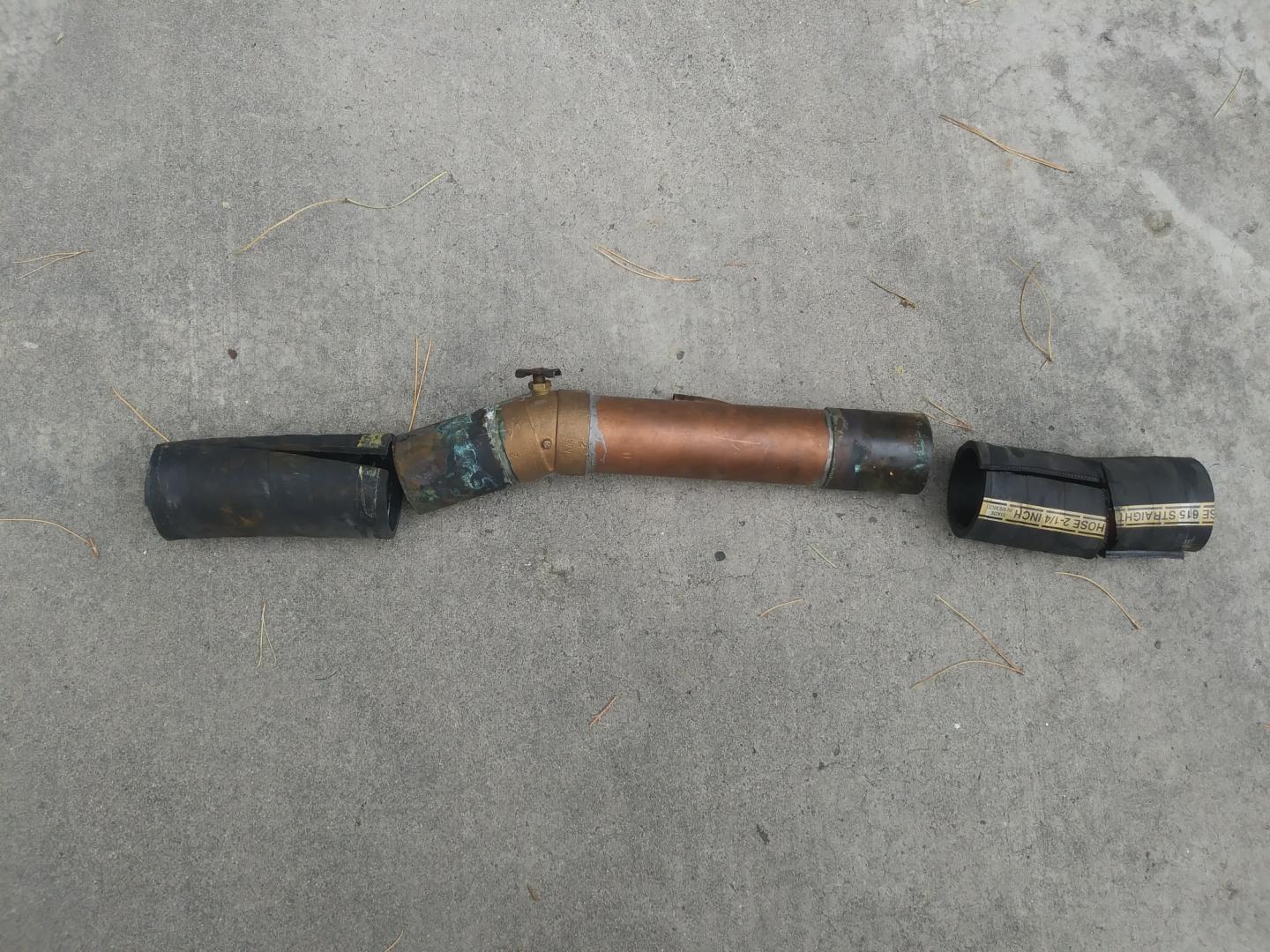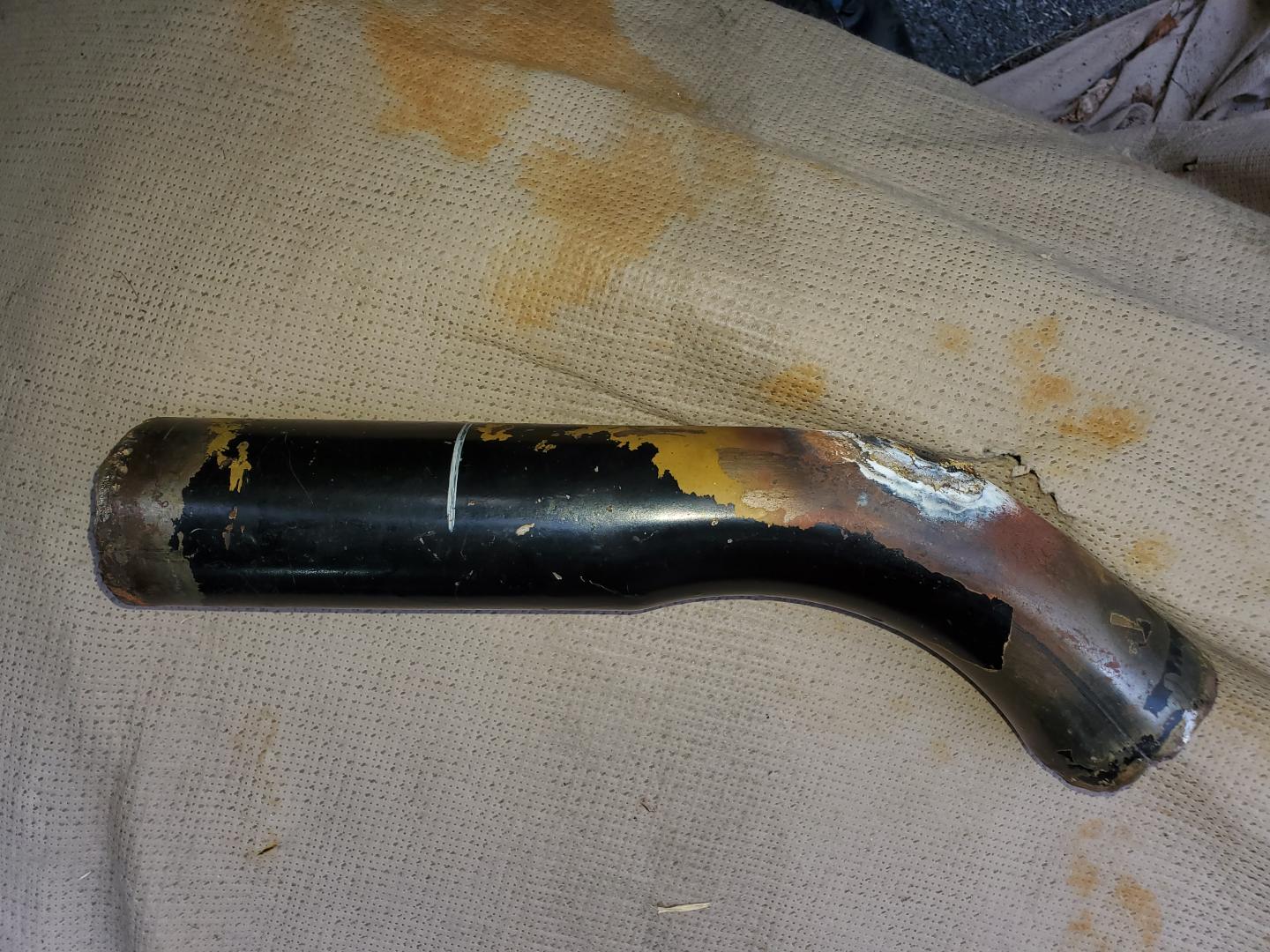- Home
- About Us
- Join/Renew
- Member Benefits
- Member Pages
- Log In
- Help
- Museum Store
I had to remove the lower radiator tube and hoses in order to raise the radiator prior to assembling the radiator shutters, grille surround and attaching to the front fenders.
Is the large brass tube with shallow elbow fitting original to a 1935 845 Eight? I have assumed it is.
There are many posts through the years talking about the Pierce water pump collapsing the lower hose from suction but on mine this brass tube is so long that there are only a few inches of unsupported rubber hose at each end and it seems improbable that the short spans of the two hose segments connecting the brass tube could collapse. It makes me wonder if this tube is original or if possibly the problems of hose collapsing that others have had is from using a single rubber hose the entire distance from the radiator to water pump without the brass tube. Or perhaps the brass tubes were cut down in length to make it easier to assemble. 
Assembling this is a bear, there is almost no flexibility to get the hose into one end and then force into the other end. Making one of the hoses long enough that it can be slid down one end of the brass tube and then slid back over the water pump inlet seems to be the intent, but I have never had hoses stick so well as these do onto the brass tube. I remember a huge struggle to get these on a few years ago because of this, and today to get them off I gave up and cut them off. part of it is the large 2 1/4″ diameter.
With that, is there some sort of lubricant that can be applied to rubber over brass to let them slip more easily? I am afraid I am going to have to remove the water pump just to re-assemble this thing with new hose segments.
Thanks for any suggestions.
Jim,
Here is a suggested procedure to prepare and install your water pump suction line into your car.
First, clean the ends of the brass tube down to bare metal, being careful to remove all the old rubber contact material (probably copper sulfate from the vulcanized rubber). Be careful to do the final cleaning with a Scotch-Brite pad scrubbing around the tube, but not along it, shining it up. Remove all axial scratches as they can be the source of drips and leaks. The idea here is to make a length on each end clean and smooth enough for each new hose sections to slide completely onto the pipe, allowing this assembly to easily fit back into the car.
Second, Clean the crud from metal parts that will be on the other end of the hose as these will have to provide a sealing surface for the new hose. While this cleaning is not as important as the brass pipe, each must be clean enough to provide a good sealing surface.
Third, use a lubricant that will allow the hoses to slide easily on the brass surfaces and then back onto the mating pipes. I have seen glycerol lubricants used in both industrial and commercial environments with good success. However, most of these are made with an oil base leaving a residue. Adding any amount of grease into a cooling system is a bad idea. The best material for this application is a glycerol lubricant made from a water base to dissolve completely into radiator water without any negative consequences. The one I recommend is the famous KY jelly. Available at local drug stores in a convenient size tube for this task.
Fourth, apply the lubricant liberally to inside surface along the full length of each hose. Then apply liberally to the outside of the brass pipe at both ends, each a distance longer than the hose used. Each hose should now slip their full length onto the brass tube without much problem. Be sure to slide the both hose clamps onto each section of hose even before carrying the assembly to the car! I learned this lesson several times the hard way about putting both clamps on the hose before making the connections.
Fifth, once the new pipe and hose assembly is in the right location in the car, loosen both hose clamps on one hose and slide it off the tube until properly seated onto the mating part. Snug both clamps on this hose and then repeat the sliding procedure on the other hose to its mating part. You still can adjust the center pipe to where you want it, sliding along both hoses. Tighten all four hose clamps once adjusted and the cooling system should be ready to hold water, without introducing grease into your cooling system.
Regards, Herb
KY jelly, who’d of thunk? Stifling the crude comments!
Thanks, Jim
Jim: My 845 has the original cooper tube for the lower hoses. It also has a petcock to drain the cooling system.
Jim: Please pardon my spelling cooper instead of copper. I’m the second owner of my 845 having purchased it in November 1950.
Paul
Thanks Paul, sounds like the same as mine so it must be original.
Here
Here is the tube off my 845 and it is steel. I know its original, because the owner of the car before me brought it in 1956 and was too cheap to do any work to it.
